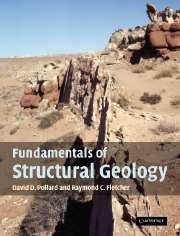Chapter 3 - Characterizing structures using differential geometry
Summary
Two aerial views of the southeastern margin of the San Rafael Swell, UT. Mesozoic clasitic sedimentary rocks are upturned in the Waterpocket monocline. Photographs by D.D. Pollard.
The strange combination of mathematics and physics is a Greek invention, pioneered by Archimedes. Modern science is a mythical monster: half-goat, half-bird. The student of physics is led simultaneously to the laboratory, to face the phenomena of physical reality; and to the math course, to forget about the phenomena and to contemplate pure abstractions. That this hybrid existence is at all fertile is amazing: we use it, because we have discovered its effectiveness through experience.
The structure of the application of mathematics to physics by Archimedes, then, is this: by making explicit, clear assumptions, one draws the logical implications of the assumptions, which then have to hold for the world – as long as the assumptions themselves do.
Mathematics may have little to say, directly, about the physical world, but it is the only way to say anything at all with any certainty. The bet of modern science – following on Archimedes – is that we are willing to say very little, as long as what we say is well argued. Good arguments are good starting points for truly productive discussion, and so it is not surprising that the mathematical route has been so productive in modern science (Netz, 2000).
In the previous chapter we illustrated examples of geological surfaces, such as the top of the Triassic Chinle Formation throughout the San Rafael Swell in southern Utah, using structure contours (Fig. 2.27).
Information
- Type
- Chapter
- Information
- Fundamentals of Structural Geology , pp. 75 - 119Publisher: Cambridge University PressPrint publication year: 2005
